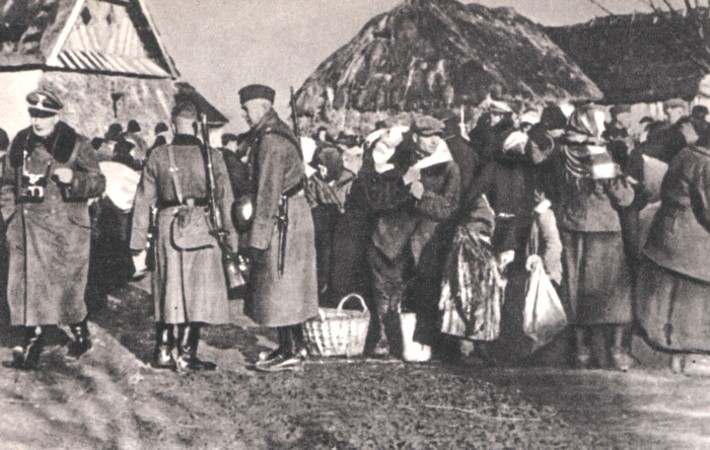For the Germans, World War II was about creating a living space (Lebensraum) in the east. In order to realize these ideas, they committed genocide against the Poles. One of the symbols of this hateful ideology was the attempted displacement of the Polish population from the Zamość region.
Our ancestors knew the martyrdom that our nation experienced during World War II. Knowing full well what war is (unlike the promiscuous leftist youth who think that by attacking Catholic churches they are at war), numerous memories were collected after the war to serve as examples for the younger generation.
One of the tragic episodes connected with the displacement of the Polish population from the Zamość region was the transit camp in Zamość. The Germans established it in November 1942. The camp consisted of 16 barracks separated from each other with barbed wire, which made it the biggest resettlement camp created by the Germans for Poles displaced from the Zamość region.
Today for you a description of the “life” that the Germans and their allies created for the Poles:
(…) A brutal pounding on the windows roused us from sleep (…) Two drunk Germans came in. There was no time to cry. They gave us ten minutes. (…) One and a half thousand people were standing on the snow. We were awaiting for our fate. There was an SS cordon all around. (…) Cold and hungry children were crying. The adults waited calmly. They wanted to survive their tragedy with dignity. Some secretly wiped away tears. There was no need to cry. They calmed down. We will endure the worst. Let the Krauts not see our tears. Let them not be happy. We don’t bend our necks. Freezing to the bone, we started to load ourselves into the wagon (…) Instead of going straight along the road to Zamość, the convoy turned onto a dirt road (…) Another convoy was driving along the road from Zamość to Skierbieszów. There were German settlers from Bessarabia, Hungary, Romania, Yugoslavia. They were going to occupy still warm rooms. (…) The next camp was number four. Segregation of families. Something most despicable. A scene of the slaughter of innocents from the times of Nero, only in a German version. Taking children away, or rather tearing them out of their mothers’ hands. The segregation was led by commander Grunert, “Kanarkowy”. Blond-haired sluts helped. They were tugging the children glued to their mothers’ breasts, attached to their legs. They were pulling them out. Grunert was kicking, pushing, beating (…) They put children and old people into the sixteen-person cage. Each infirm old man was assigned six children to look after. Before our arrival, the sixteen was a huge stable for horses. There was no floor, no halls, no corridor, no bunks. Just a huge wooden barn with a threshing floor and lots of mud. Instead of windows, there were barn openings. Nests of old straw served as beds, the only door that opened into the interior of the huge barrack was broken (…) In the central part of the camp stood a toilet. One for everyone. There was no division into male and female. There were no partitions. There were a dozen or so cloacal holes in the cement floor. Underneath there was a huge pool of sewer (…) On the third day, Józio Kozłowski drowned in the cloaca pool. He slipped and fell into the hole. A few days later another boy died in the pool. He was trying to get to ten. He ran to his mother. Ne”-Schütz caught him at the hole. Like a dead cat he carried him to the toilet and threw him into the pool.[1]
Such memoirs should reach not only the public opinion in the West, but, as recent events show, the representatives of the younger generation of Poles who desecrate the memorials of their ancestors who died for Poland at the hands of the enemies of our Fatherland.
[1] An account by doctor Zygmunt Węcławik regardingtthe displacement of Skierbieszów, [in:] Zamojszczyzna in the Nazi period (accounts by displaced persons and partisans), ed. A. Glińska, Warsaw 1968, p. 77-81.
Tłum. Joanna Kwiatek-Meyer
[Wróć do tekstu w języku polskim]
Podoba Ci się to co robimy? Wesprzyj projekt Magna Polonia!





